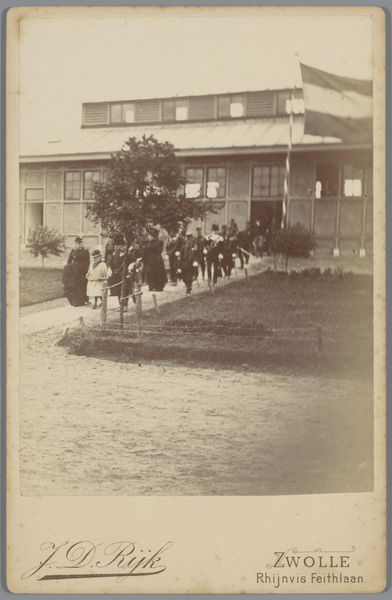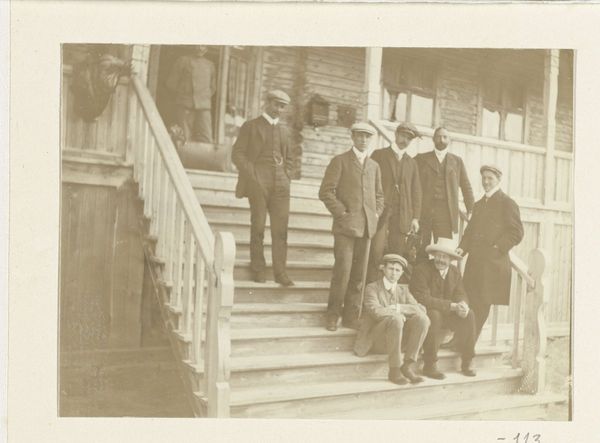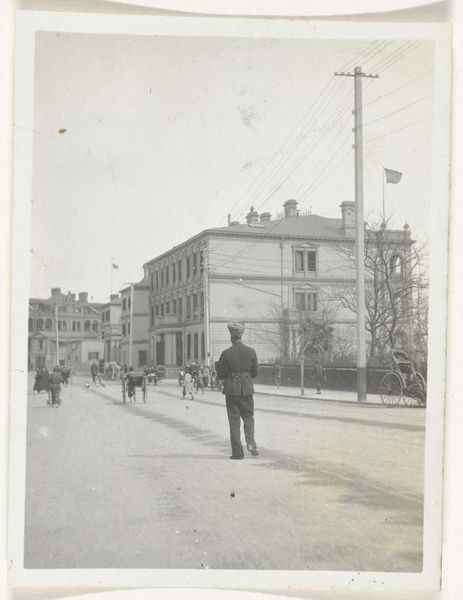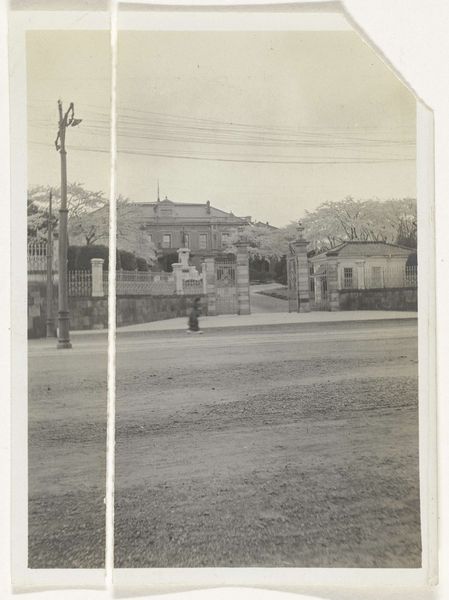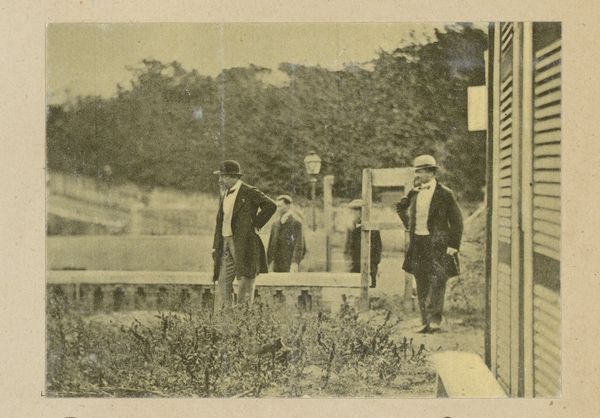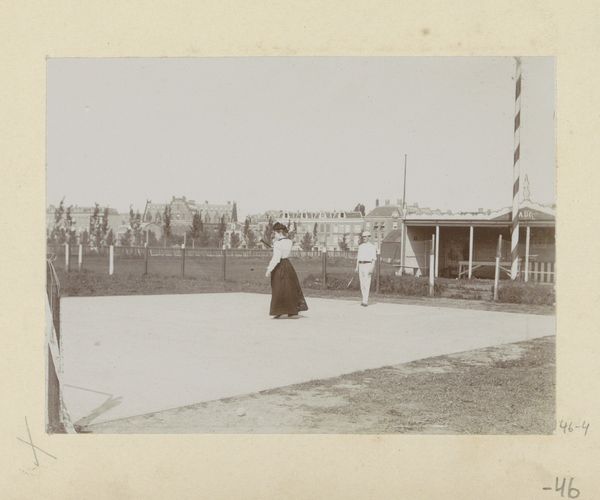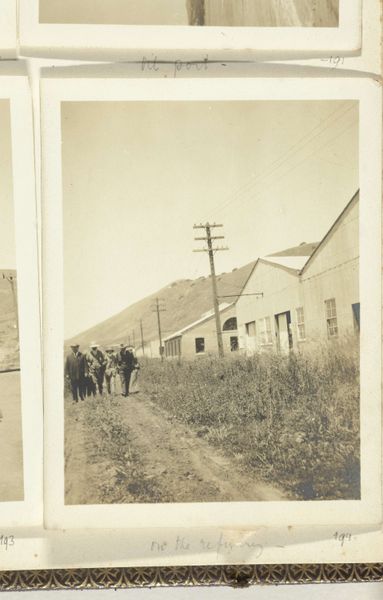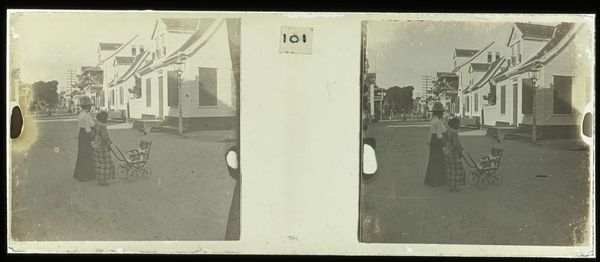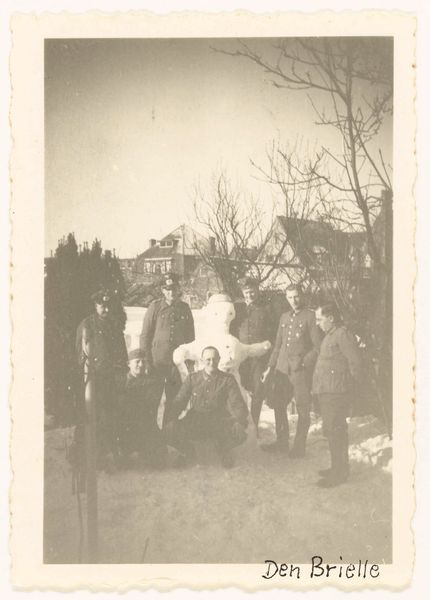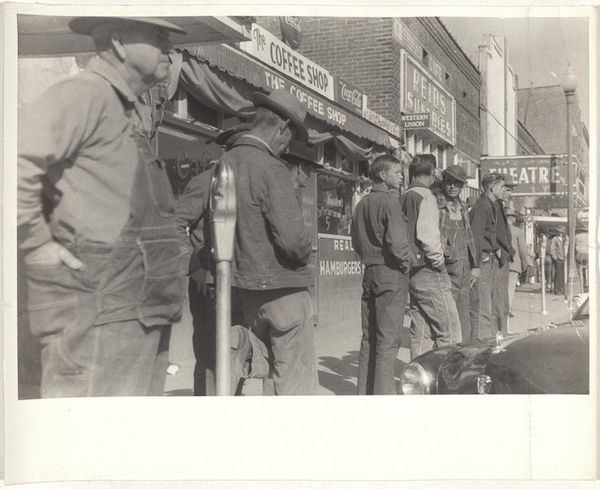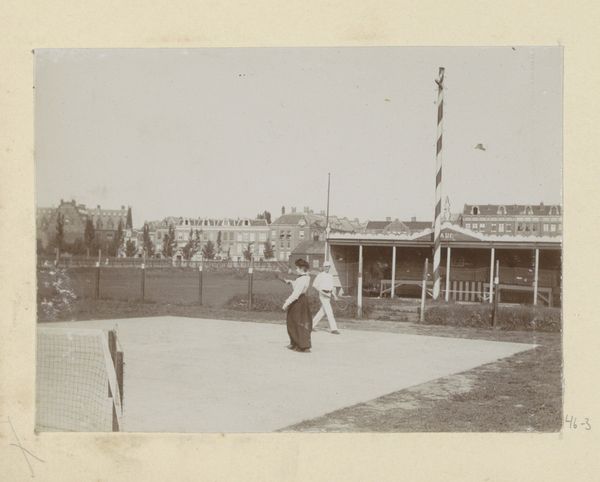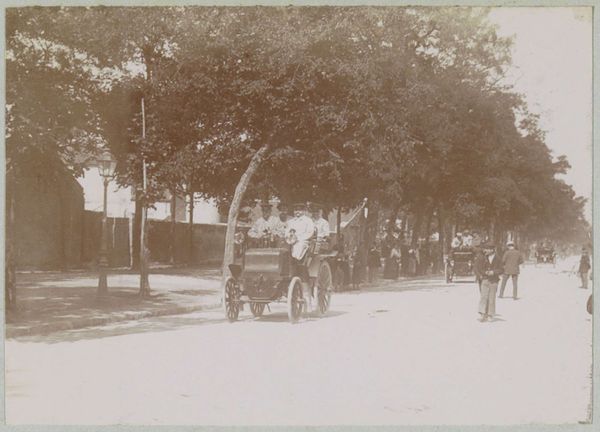
photography, gelatin-silver-print
#
portrait
#
pictorialism
#
archive photography
#
photography
#
orientalism
#
gelatin-silver-print
#
cityscape
Dimensions: height 108 mm, width 78 mm, height 363 mm, width 268 mm
Copyright: Rijks Museum: Open Domain
Curator: This gelatin-silver print, titled "Shanghai installation", offers a glimpse of Shanghai before 1908 through the lens of Geldolph Adriaan Kessler. You get a certain austere feel when looking at this, wouldn’t you agree? Editor: Absolutely, there's a stillness to the composition. The greyscale palette amplifies that mood, giving the whole scene a very distant quality. It evokes a sense of the past being irrevocably gone. Curator: The artist’s adherence to pictorialism adds to the romantic aesthetic you've mentioned. Note how the soft focus, while blurring the harsh edges of reality, subtly conveys a very composed image that adheres to certain artistic principles above historical accuracy. The lines created by buildings receding into space contrast the irregular clusters of figures, guiding the viewer's eye, I think. Editor: The figures themselves strike me. Their hats, the way they huddle together, speak volumes. Head coverings often represent social status or cultural roles—here, they appear as a uniform signifier of the era, suggesting conformity amidst the backdrop of a rapidly modernizing Shanghai. There's something potent about these anonymous figures frozen in time. Curator: Fascinating! I am particularly struck by how the texture achieved using the gelatin-silver process enriches the shadows and subtle gradients in their clothes and the surrounding landscape, adding another textural dimension that complements the rather linear forms that dominate the background buildings. Editor: I agree, it deepens the narrative. Consider the open structures and empty doorways—do these imply transition? A sense of the East meeting West, trade, the exchange of ideas? The open-air pavilion structure could also represent communal space, hinting at gathering or negotiation. Curator: This interplay is the point; even a cityscape portrait becomes an exercise in balancing shadow and light. The framing—the very shape of the picture—invites us to consider binaries as artistic structure. The negative space offers us areas to ponder the relations and tensions of the period. Editor: Indeed. And through these figures, we can ponder on a moment where symbolism and progress become literally captured together in photographic emulsion. Kessler invites us to do precisely this. Curator: Looking at "Shanghai Installation," it makes me consider how something as seemingly simple as balance can be such an invitation into visual language and history. Editor: It is striking to be reminded about the symbolic strength held in such still simplicity.
Comments
No comments
Be the first to comment and join the conversation on the ultimate creative platform.

